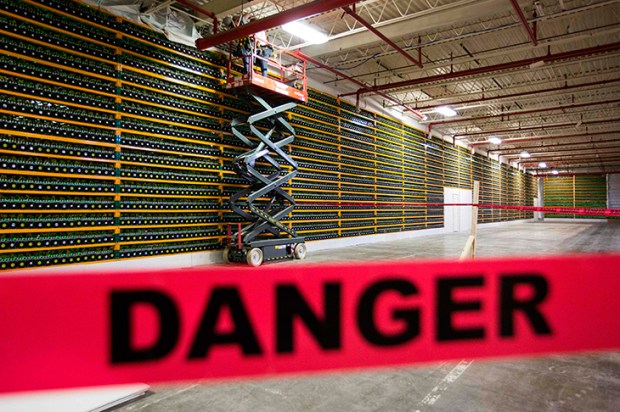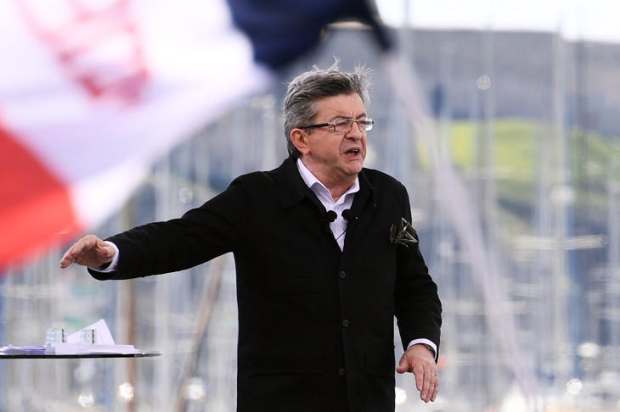I was acting and directing at Helmsley Arts Centre last week, in a little piece of ‘café theatre’ performed in the bar to an audience of only 50. But it was a sell-out every night and, I hope, a light-hearted distraction for the citizens of my Yorkshire town from all that gloomy talk about cuts, more cuts — and who deserves to be cut most.
I was acting and directing at Helmsley Arts Centre last week, in a little piece of ‘café theatre’ performed in the bar to an audience of only 50. But it was a sell-out every night and, I hope, a light-hearted distraction for the citizens of my Yorkshire town from all that gloomy talk about cuts, more cuts — and who deserves to be cut most.
Our arts centre, I should explain, is the very model of David Cameron’s Big Society writ small. We raised the money to create it out of the shell of an old Quaker meeting house and we have run it successfully, with a handful of staff and a large volunteer force, for almost 20 years. In exchange for modest five-digit subsidies from the Arts Council and the local council (about 30 pence from the taxpayer for every £1 we generate ourselves from the box office and elsewhere) we provide a culture hub for a rural area which has no other permanent arts provision.
Our youth theatre group has formed the career aspirations of dozens of teenagers over the years; participation in our work has brightened the lives and broadened the minds of hundreds of other local folk — including me. If our subsidy were cut beyond what Arts Council chief executive Alan Avery calls ‘the tipping point’, we might struggle on, with a shrunken programme and an ageing all-volunteer workforce. But for a minuscule saving to the public purse, that would be a perversely destructive turn of events. In terms of creativity and social cohesion, we are a beacon of the multiplier effects of well-directed subsidy. It’s obvious — isn’t it? — that cuts should fall harder elsewhere, and indeed that they should start right at the top, with those lavish ‘flagship’ companies that could just as easily fund themselves from fat-cat bankers’ sponsorship and look-at-me philanthropy.
But then last week I also found myself, in an all-day board meeting, looking at the same issues through the other end of the telescope as a trustee-director of Opera North — the flagship of the northern arts scene, a company with an international reputation that adds much-needed lustre to its home city of Leeds and delivers not just main-stage grand opera but brilliant educational and orchestral outreach programmes across a huge region of England as well.
In exchange for Arts Council and local authority funding approaching £11 million (about £2.40 from the public purse for every £1 we generate ourselves), the company provides a kind of northern Eden Project of home-grown musical talent and theatrical skills, nurturing a high art-form which has made every effort to shed its reputation for élitism and reach out to new audiences. And smart though we are at fundraising, and much though we aspire to rebalance that pound-for-pound ratio, we could not survive in anything like our present form on box-office and donations alone.
A recent report by Arts & Business described ‘private investment’ (sponsorship, gifts and legacies, which currently meet the cost of only 15 per cent of UK arts provision) as ‘a supplement, not a substitute’ for state funding, and the idea that Britain might swiftly move to the American system of arts philanthropy underpinned by tax relief, advocated by Kevin Spacey last week, as simply ‘unrealistic’. Two of Opera North’s biggest donors, the publisher Dr Keith Howard and the former housebuilder Terry Bramall, were among the signatories of a letter to the Prime Minister in July warning that they and their ilk could not be expected to make up financial shortfalls in major arts companies created by funding cuts. Slash Opera North’s grants beyond the tipping point, therefore, and you will not only wipe out whole seasons of performance and destroy core strengths that come from employing a full-time orchestra, chorus and technical crew; you will actually deter the most generous supporters from helping repair the damage.
So don’t sever the lifeline for community arts projects that have proven their worth, but likewise don’t undo the work of decades by swinging the axe at world-class arts institutions. Don’t disadvantage the regions by favouring London, don’t steal arts money to fill Olympic black holes, and don’t think companies that have been most successful at private fundraising can bear the deepest public cuts. Stop quoting the not-a-penny-from-the-taxpayer example of Glyndebourne, which is merely the super-élitist exception that proves the rule. And feel pity for Arts Council bureaucrats as they wrestle with these choices while at the same time radically shrinking — once more with feeling — their own administrative base.
Still, for all the howls of protest from luvviedom, there are points of consolation. There never was the slightest chance that arts spending would be ringfenced against a general round of cuts, whoever won the election. But no serious British politician (unless you count Nigel Farage of Ukip, who gamely made the case in the recent Spectator debate) argues for total abolition of arts subsidy — though if ever there was a moment when that might have happened, it was now.
Yes, we had fine arts before we had an Arts Council, just as we had fine doctors before we had an NHS; and, yes, America has culture (of a sort) without subsidy. But what we have here now makes our society a little less uncivilised, and, as Sadler’s Wells artistic director Alistair Spalding said recently, ‘We should be proud of our mixed-economy model.’
Culture ministers Jeremy Hunt and Ed Vaizey are unequivocally on that side of the argument, and the settlement indicated so far — 15 per cent cuts for ‘regularly funded’ Arts Council clients over four years, with the heaviest annual cut, of 6.9 per cent, applied more or less equally across the board in the first year — is a slightly softer blow than arts companies had been warned to expect. They’ve all done the budget modelling these past few months; the good will survive and the best will thrive. And there’s victory — albeit Pyrrhic, perhaps — in the reaffirmation that small or large, north or south, local or national the arts still deserve their tiny slice of the public cake.
The post Funding: Local heroes appeared first on The Spectator.
Got something to add? Join the discussion and comment below.
Get 10 issues for just $10
Subscribe to The Spectator Australia today for the next 10 magazine issues, plus full online access, for just $10.













Comments
Don't miss out
Join the conversation with other Spectator Australia readers. Subscribe to leave a comment.
SUBSCRIBEAlready a subscriber? Log in